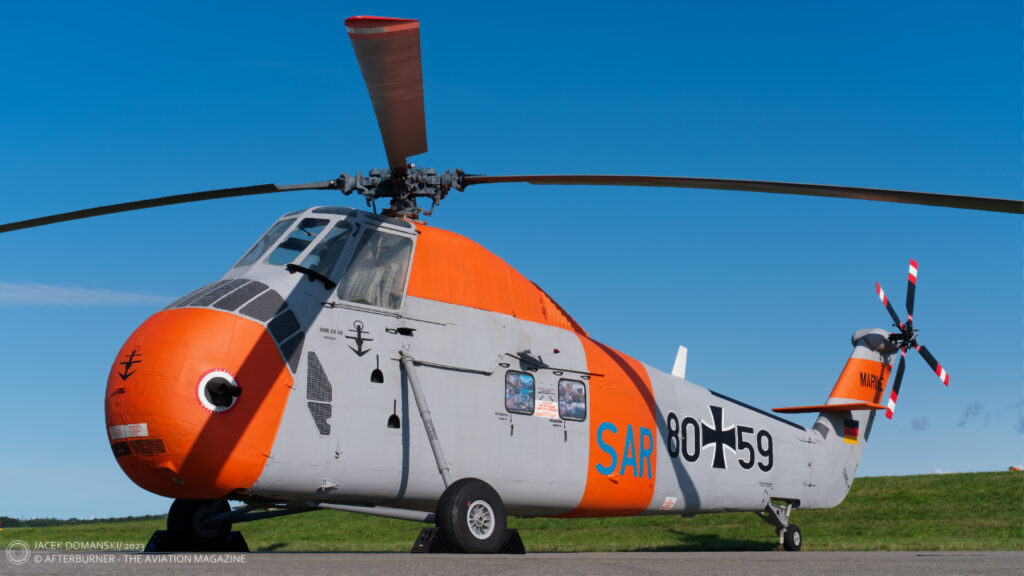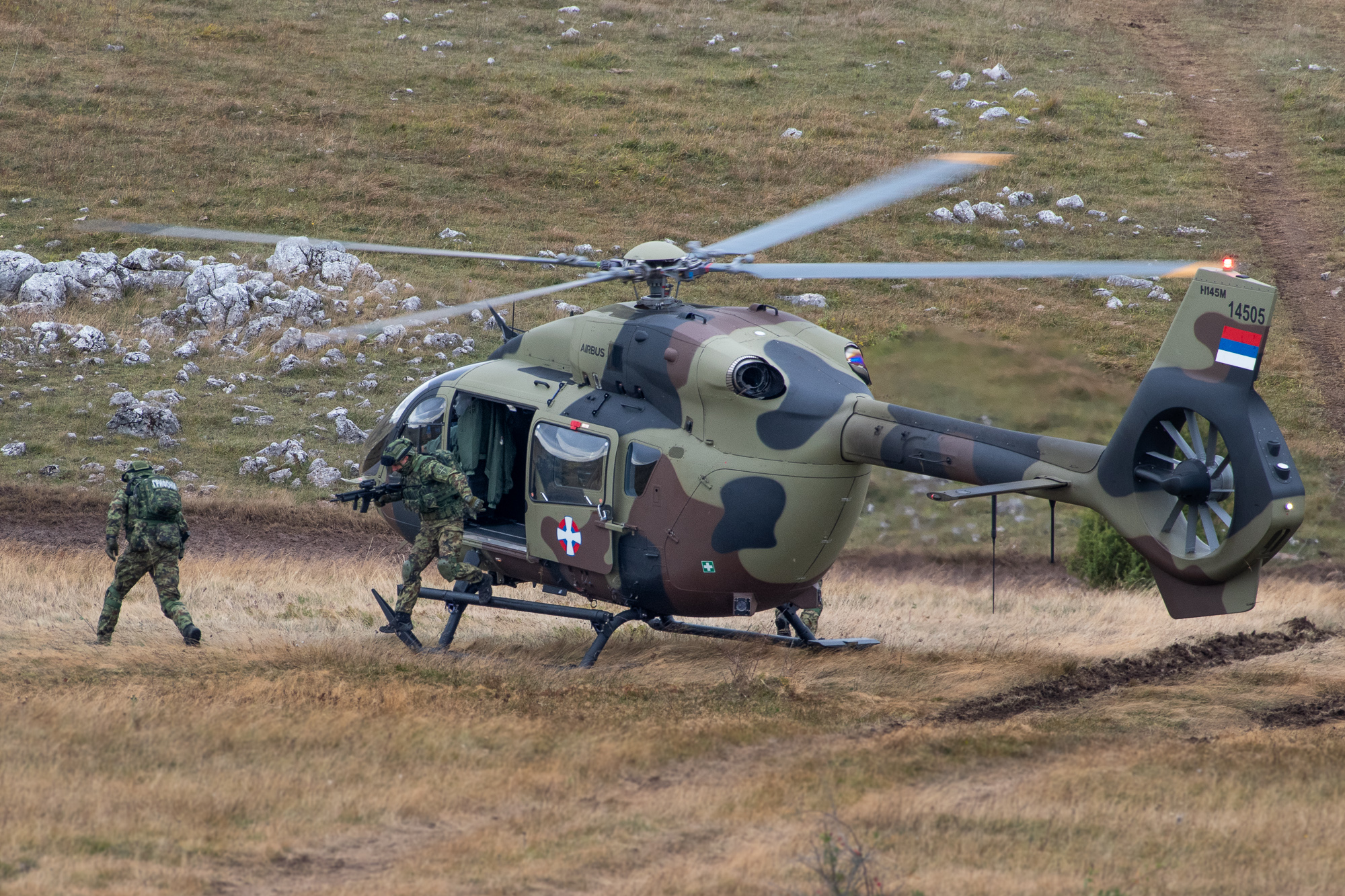 Sikorsky H-34G.III (c/n 58-1515, formerly PZ+344, QC+404 and 80+59 of of Heeresfliegertruppe / the German Army Air Corps, currently wearing the German naval aviation / Marineflieger livery), static display during Galileo SAR Meet 2023, Nordholz, August 2023.
Sikorsky H-34G.III (c/n 58-1515, formerly PZ+344, QC+404 and 80+59 of of Heeresfliegertruppe / the German Army Air Corps, currently wearing the German naval aviation / Marineflieger livery), static display during Galileo SAR Meet 2023, Nordholz, August 2023.
In the late 1940s, the Sikorsky company developed a multi-purpose, high-tail, piston engine-powered rotorcraft, designated S-55 (military designation H-19 Chicksaw). In 1950, the helicopter was introduced into service with the United States Air Force (USAF) and, in following years, acquired also by the US Navy, the US Marine Corps and the US Coast Guard.
Shortly after the H-19 introduction to the market, the Sikorsky company began works on its larger and more powerful variant. The new rotorcraft received company designation S-58 and performed its maiden flight on 8th March 1954.
Similarly to its predecessor, the S-58 was powered by a radial, piston engine. In this case it was nine-cylinder, air-cooled Wright R-1820 Cyclone, generating 1,525 hp. The helicopter also kept the characteristic, distinctive design with engine placed below cockpit and main drive shaft passing through the front part of the fuselage. However, contrary to the H-19, the new rotorcraft was built with traditional, tailwheel-type landing gear.
In September of 1954, the S-58 entered operational service with the US Navy, designated HSS-1 Seabat (for anti-submarine warfare) and HUS-1 Seahorse (for transport duties). One year later, the rotorcraft was acquired by the US Army, where it was designated H-34 Choctaw, and by the US Marine Corps in 1957.
In 1962, the US Department of Defense introduced its new aircraft designation system. Therefore, the S-58 helicopters in active service were re-named SH-34, UH-34 and CH-34, respectively.
The Sikorsky S-58 quickly became one of the world´s popular military transport helicopters. Apart from the United States, the rotorcraft was also acquired by approximately twenty countries, such as Argentina, Belgium, Canada, France, Germany, Indonesia, Nicaragua, the Netherlands and Thailand.
The S-58 was being manufactured by the Sikorsky company until 1968, with approximately 1,800 helicopters of that type built. The rotorcraft was also produced under license in France and the United Kingdom. However, its British variant was powered by a turboshaft engine and designated Wessex. In total, there were approximately fifty variants of the S-58 developed over the years.
Combat record of the S-58 was opened during the Algerian War (1954-1962), when the rotorcraft was widely used by the French Army Light Aviation. The helicopter also participated in the Vietnam War and the Six-Day War. In addition, the British-made Wessex variant was used in the Falklands War and the so-called Borneo confrontation (1963-1966).
In 1957, the first batch of the S-58s was delivered to Germany. The Bundeswehr ordered 145 examples of the rotorcraft that in German service were designated H-34G. The army aviation corps (Heeresfliegertruppe) was the country´s main operator of the helicopter, although the H-34G was also used by the other two main branches of the German armed forces – the naval aviation (Marineflieger) and the air force (Luftwaffe).
Apart from its main combat transport and liaison tasks, the German H-34G helicopters were also used for search-and-rescue duties, by both Marineflieger (up to 25 examples with Marinefliegergeschwader 5) and Luftwaffe. In later years, some naval H-34Gs were converted for anti-submarine warfare. The last H-34G in German service was officially retired in 1975, although that type of helicopter was already withdrawn from active duty in 1973.
The H-34G featured within our Photo of the Week series was initially introduced into active service with Heeresfliegertruppe as PZ+344. During its service, the helicopter changed its German serial number to QC+404 and then 80+59.
After retiring, the helicopter was transferred to Marineflieger, repainted into SAR naval aviation livery and since 1986 displayed as a gate guard in Kiel Holtenau naval air base, and then, since 2012, at Nordholz. Interesting fact is that, as the gate guard, the rotorcraft carried a fictional tactical number 80+52.
In 2020, the rotorcraft 58-1515 was nicely renovated and received its true 80+59 designation, however, still keeping the SAR livery it never really carried. The reconstruction works were performed by the technical staff at Nordholz, with assistance from the Bundeswehr and the Airbus company.



